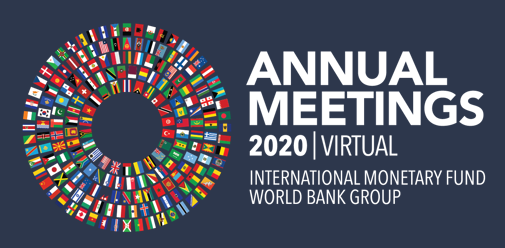
Looking into 2021-22, the focus will shift from emergency lending to supporting recovery and restructuring
Evgeny Vinokurov, Chief Economist of the Eurasian Fund for Stabilization and Development, made a presentation at the ‘Central Asia and the Caucasus’ meeting held as part of the IMF and World Bank 2020 Annual Meeting
On October 16, 2020, the international financial institutions (IFIs) operating in the Caucasus and Central Asia region held a high-level session in the context of the IMF-World Bank Annual Meeting. This event is a part of the ongoing dialogue among IFIs aimed at increasing the efficiency of cooperation and coordination of activities in the region. During this meeting, IFI representatives shared their assessments on developments and prospects on the CCA region facing the COVID-19 pandemic. The Eurasian Fund for Stabilization and Development is a regular participant in such events.
Evgeny Vinokurov, EFSD Chief Economist, noted that in the baseline scenario, as a whole, the Central Asia and the Caucasus region would recover in 2021 what it lost in 2020. However, prospects for sustainable growth could be weakened by various headwinds. Besides, the COVID-19 pandemic exerts durable negative impact on the CCA countries. E.g., in the EFSD recipient countries, the long-term potential growth trajectory will become lower by 0.5% on average.
Challenges associated with debt sustainability in the medium term are substantial. According to the EFSD projections, the debt to GDP ratio will go up by 8 percentage points on average among its recipient countries. In line with these projections, we estimate that the public debt in the Kyrgyz Republic and Armenia may reach 60% of GDP in 2020-21 and almost 50% of GDP in Tajikistan. The issue of managing and servicing public debt will come at the forefront in many countries in the world after the end of the active phase of fighting СOVID-19. It is likely to become a key component of “Phase II” – concerted efforts by the global financial safety net to help low- and lower-middle income countries on the way towards sustainable growth.
We should now look into 2021-22. Most probably, the focus will already be not on emergency lending but rather on Phase II. Focus no.1 is recovery. Focus no.2 is restructuring. Our opinion so far is that none of the Central Asia and the Caucasus countries needs an immediate comprehensive debt restructuring. There is no urgent need as state finances are generally holding up. At the same time, the situation with gross financing needs will continue to worsen and, by 2023-24, several countries would be in need of specific actions on that.
All IFIs are closely monitoring economic dynamics. At the same time, there is a high level of uncertainty in economic estimates associated with various scenarios of the current pandemic. At the event, experts from all IFIs noted the need for closer cooperation to strengthen international support for the region in order to promote higher and more sustainable economic growth.
For more information on the subject please see EFSD Working Paper WP/20/1 "Kyrgyz Republic Debt Sustainability and External Shocks" and EFSD Working Paper WP/20/03 "Tajikistan and the Kyrgyz Republic Post-COVID-2019: Debt Sustainability, Financing Needs, and Resilience to Shocks".